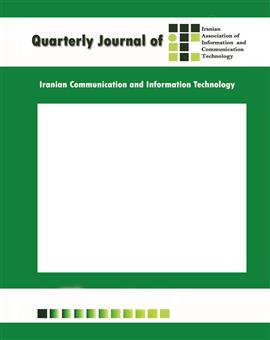Provide a new architecture for the decision support system to manage stock trading based on a combination of financial indicators
Subject Areas : عمومى
Masoud Mansoury
1
*
,
bijan mansouri
2
,
S. Alireza hashemi G.
3
![]()
1 -
2 -
3 - هیات علمی
Keywords: Decision support system, financial indicators, purchase saturation limit, sales saturation limit,
Abstract :
Financial indicators are often used to analyze the market and predict the future of stocks. But because of the complexity of the stock market, what index to use and how reliable the output of the index used is has always been an issue. In this paper, a hybrid approach in the form of a decision support system is used to offer the best stocks to buy or sell. The best stocks are selected from a set of stocks using a set of financial indicators. Each of these indicators acts as a model and shows its status in the future, given the stock situation in the past. Therefore, using a combination of indicators allows us to make decisions with more certainty. The efficiency of this system has been evaluated on the Iranian stock market data collection collected from 2001 to 2011. The results show that the indicators used and the combined use of them have led to the decision support system to produce proposals with high accuracy
1. Aronson, J., Liang, T. & Turban, E., 2005. Decision support systems and intelligent systems, Pearson, Upper Saddle River.
2.Chou, S.T. et al., 1997. A stock selection DSS combining AI and technical analysis. Annals of Operations Research, 75, pp.335–353.
3.Dong, J. et al., 2004. A framework of web-based decision support systems for portfolio selection with OLAP and PVM. Decision Support Systems, 37(3), pp.367–376.
4.Ghasemzadeh, F. & Archer, N.P., 2000. Project portfolio selection through decision support. Decision Support Systems, 29(1), pp.73–88.
5.Lambert, D.R., 1983. Commodity channel index: Tool for trading cyclic trends. Technical Analysis of Stocks & Commodities, 1.
6.Matsatsinis, N.F. et al., 2002. Intelligent DSS for portfolio management: A survey. In Proceedings of 6th Balkan conference on operational research, Thessaloniki, Greece.
7.Samaras, G.D., Matsatsinis, N.F. & Zopounidis, C., 2008. A multicriteria DSS for stock evaluation using fundamental analysis. European Journal of Operational Research, 187(3), pp.1380–1401.
8.H. Ince and T. B. Trafalis, “Kernel principal component analysis and support vector machines for stock price prediction,” IIE Transactions, vol. 39, no. 6, pp. 629–637, 2007.
9.D. K. Sharma and E. Shore, “DESIGNING A GENETIC ALGORITHM BASED DECISION SUPPORT SYSTEM FOR PORTFOLIO MANAGEMENT,” Academy of Information and Management Sciences, vol. 15, no. 2, p. 15, 2011.
10.T. Magoc and F. Modave, “The optimality of non-additive approaches for portfolio selection,” Expert Systems with Applications, vol. 38, no. 10, pp. 12967–12973, 2011.
11.S. Wang and Y. Xia, “Criteria, Models and Strategies in Portfolio Selection,” Portfolio Selection and Asset Pricing, pp. 1–22, 2002.
12.J. D. Bermudez, J. V. Segura, and E. Vercher, “A fuzzy ranking strategy for portfolio selection applied to the Spanish stock market,” in Fuzzy Systems Conference, 2007. FUZZ-IEEE 2007. IEEE International, 2007, pp. 1–4.
13.M. Fasanghari and G. A. Montazer, “Design and implementation of fuzzy expert system for Tehran Stock Exchange portfolio recommendation,” Expert Systems with Applications, vol. 37, no. 9, pp. 6138–6147, 2010.
14.S. Afshin Mansouri, D. Gallear, and M. H. Askariazad, “Decision support for build-to-order supply chain management through multiobjective
optimization,” International Journal of Production Economics, vol. 135, no. 1, pp. 24–36, 2012 15.available online: www.stockcharts.com

